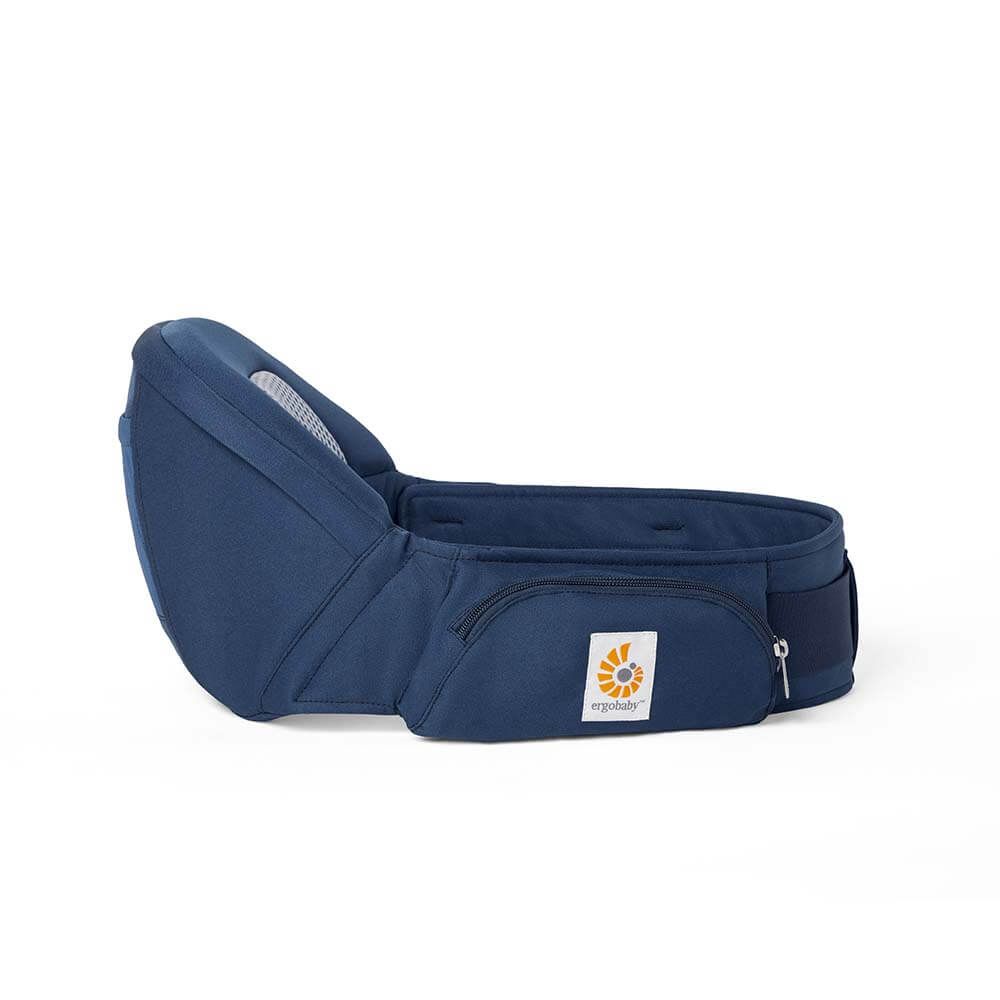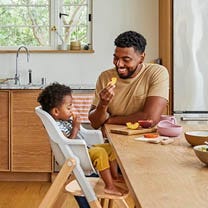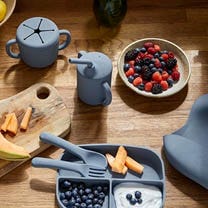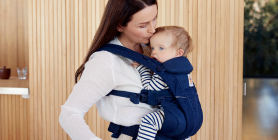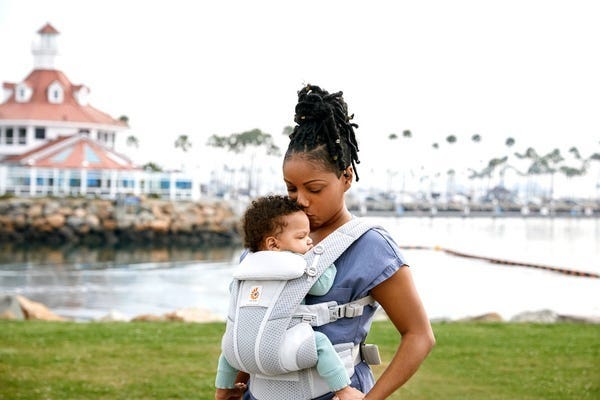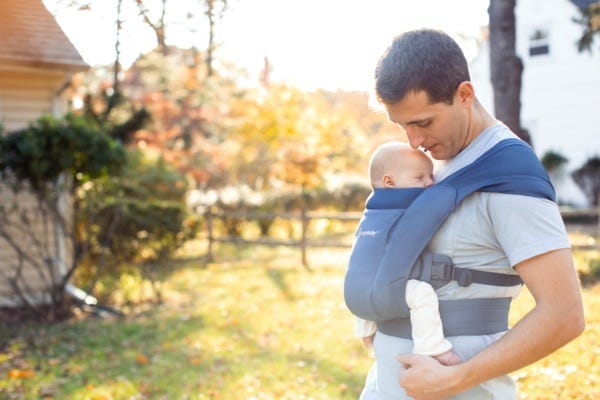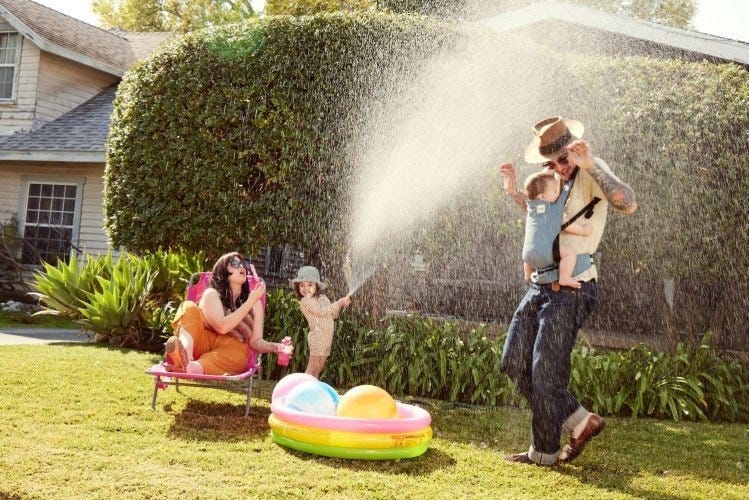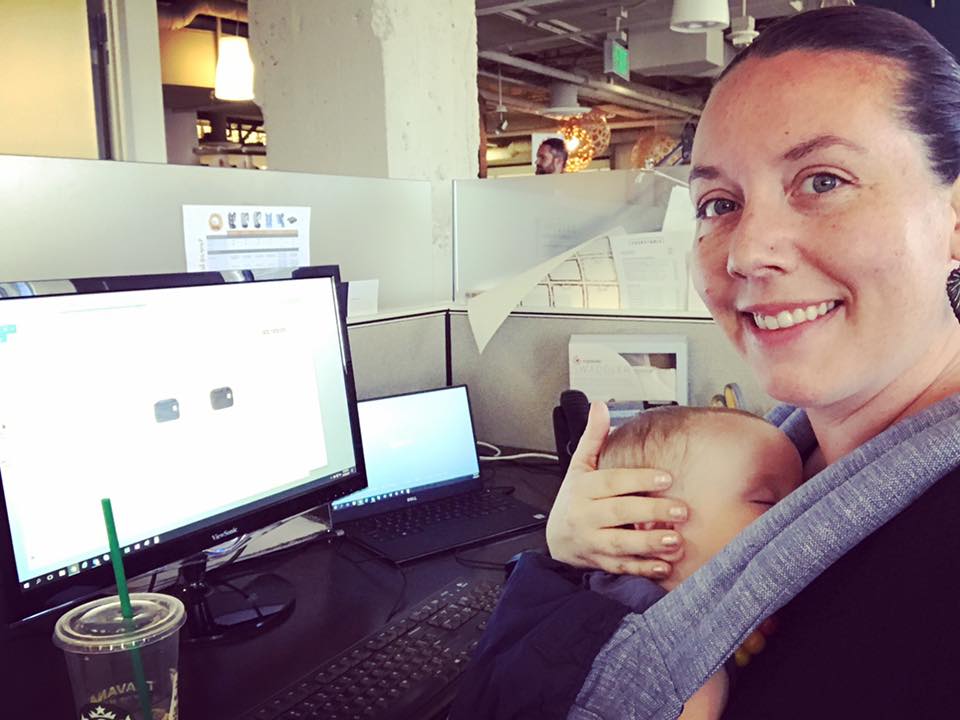
Early on I knew something was unique about my son. Everything about him just seemed more intense than other babies his age. He cried a lot, seemed behind on his developmental milestones, everything about him was just “more” summarizes how I felt at the time, and babywearing kept us all together. Looking back now I realize that I was indeed suffering from postpartum depression and some PTSD, and carrying for a high needs infant seemed to exacerbate or increase the symptoms. Breastfeeding didn’t go well, I received some really terrible advice, and pumping seemed like a special kind of torture. So we didn’t, and then came on more guilt. Not the ideal birth, not breastfeeding? What kind of Mom was I? This is where the carrier came in. It got us outside the house, this was where Chandler was most happy, and cried the least. It took me awhile to get the confidence to get out, but once I did I realized how much happier we both were. We started with walks in the neighborhood. I tried a stroller and he cried nonstop, so back into the carrier he went. It was a place of comfort and safety. And I realize now it probably gave him the input and pressure he needed to better regulate his body systems. The movement was critical in helping him to organize as well. Even now, as a happy 9-year-old, he needs a lot of movement in his day to be able to settle down and allow for learning, for eating and sleep and an overall sense of balance and contentment. I brought up to his pediatrician around 18 months that I thought some of his behaviors were concerning. She dismissed me, said he was a boy, “they’re just more intense” she said. I called Regional Center, our local resource center for developmental support a few months later and asked for an evaluation. They said he was just delayed in speech, but again, deep down, I knew there was more. My husband was always supportive, but he wasn’t seeing what I was, but so much of that was because I was with him all day long. Since he was now mobile, the carrier turned into something else. It was immensely important in our day to day routine, but that’s because I needed it for his safety. He pulled away from me, even dislocate his arm to run away, and after a few close calls of him trying to run into traffic, a carrier was our saving grace. It kept him in arms reach, and kept my arms free to do what I needed to get done and transport him from place to place. At two years old I had had enough. I lost it and sobbed my eyes out on the phone to his Regional Care coordinator. They ordered a developmental evaluation by their Pediatric Psychiatrist while we waited to see a Developmental Pediatrician, and at this point I was eagerly awaiting a diagnosis, something, anything to give us some help for him. On the day of his appointment, I was hoping, praying, they would see what I saw. That they wouldn’t just dismiss me and once again have another professional make me feel like I was not telling the truth or imagining things. “I am confident he has Autism” she said. And while that would break the heart of many, I felt elated, elated that someone validated what I had always suspected and we could finally move forward and create a plan of action. I popped him back in the carrier to walk to our car. I cried on that walk, but he was smiling and happy looking around, his safe space. Once we got the ball rolling with therapy, I was thrilled to find out our Pediatric Occupational Therapy team was supportive of us continuing to wear him in a carrier. He had some low tone (hypotonic) in his core, and keeping him supported from knee to knee in a good squat position facing us on our fronts or backs, was something she supported completely so he could counter our movements and build those core muscles. We worked with her to make sure the carrier and positioning was both correct, and meeting his needs. Our Speech therapist was also supportive of continuing to wear him in a carrier. It allowed me to narrate my day, hold conversations with him and keep up American Sign Language, which I credit for helping to keep his frustration levels down as he slowly gained expressive language. He was able to see and participate in all of our day to day activities, feel included and work on reading social cues. Eventually he outgrew being worn in the carrier, however I am eternally grateful that we had that tool during one of the most difficult times of our life. As our daughter came along two years later, and was also diagnosed with Autism, we were better prepared to handle each step of the way because we had a tool as simple as a baby carrier. For some the use of a carrier is emotional, for others it’s a tool. As a babywearing educator and now Mother of four, I believe it’s a beautiful and often complex mix of both. While my own experience is uniquely my own, I absolutely believe a baby carrier can have a therapeutic effect, and my hope one day is for more research, which could hopefully lead to insurance coverage and carrying beyond infancy to be an option to support families through a variety of special circumstances and needs, tailored to their bodies and their situation.
Emotional Benefits of Getting Outside
Spending time in nature with your baby can strengthen the bond between you. The simple act of holding your baby close, feeling their warmth, and sharing new experiences together can create strong emotional connections. It’s also a wonderful way to reduce stress and improve your mood. When my littles were extra fussy, I’d take a walk around the neighborhood. Even though I don't live in an area with trails and surrounded by nature, simply behind outside changed everything. A little vitamin D does wonders!
Cognitive Development
Nature is a sensory wonderland for babies. The different sights, sounds, and smells can stimulate your baby’s senses and promote cognitive development. Watching leaves rustle, hearing birds chirp, and feeling the texture of a tree bark can all contribute to their learning and development.
All About Baby Carriers for Nature Adventures
Choosing the Right Baby Carrier
When it comes to selecting the best baby carrier for summer adventures, there are several options to consider.
Types of Baby Carriers:
- Wraps: Perfect for newborns, providing a snug and secure fit.
- Slings: Ideal for quick and easy use, offering good ventilation.
- Soft Structured Carriers: Versatile and comfortable for both parent and baby, suitable for longer trips.
Factors to Consider:
- Baby’s Age and Weight: Ensure the carrier is appropriate for your baby’s size and weight. For example, Ergobaby’s Embrace Newborn Carrier is perfect for the fourth trimester where baby is small and you’re looking for an easy way to stay close. As they grow, you’ll want to upgrade to an all-position carrier that’s meant for growing babies.
- Parent’s Comfort and Ergonomics: Look for carriers with padded shoulder straps and lumbar support if you’re planning on longer outings.
- Ease of Use: Choose a carrier that is easy to put on and take off.
- Climate and Breathability: Opt for carriers made of breathable fabrics to keep you and your baby cool in hot weather.
Safety Tips:
- Proper Positioning: Ensure your baby is seated correctly, with their legs in an "M" position and their head should be close enough to kiss.
- Checking for Wear and Tear: Regularly inspect your carrier for any signs of damage.
- Ensuring Adequate Support: Make sure the carrier provides proper support for your baby’s head and neck.
Exploring Nature with a Baby Carrier
Ideal Spots for a Nature Walk with Baby
- Parks and Gardens: Great for leisurely walks and picnics.
- Nature Trails and Forests: Perfect for more adventurous outings.
- Beaches and Lakesides: Wonderful for enjoying the water and sand, with the right carrier.
Activity Ideas
- Hiking: Enjoy a scenic hike with a hiking baby carrier that offers support and storage.
- Bird Watching: Use your carrier to keep your baby close while you explore and observe wildlife.
- Picnics: A carrier can free up your hands, making it easier to carry picnic supplies.
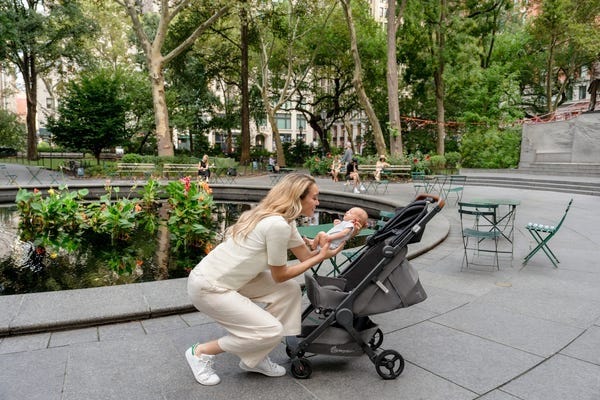

Advantages of Using Strollers for Nature Adventures
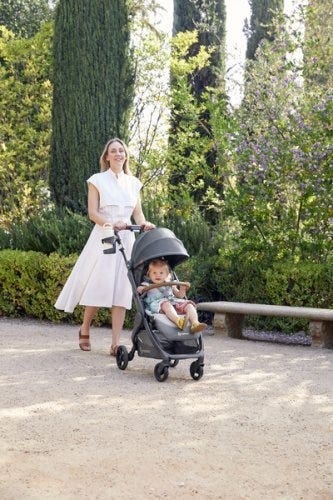

While baby carriers are fantastic for mobility and closeness, depending on the adventure of choice you might want to be a stroller along too.
There are a LOT of baby stroller options on the market. So we understand how confusing it can be to choose the one that’s right for your family. Not only are there a variety of brands, but a variety of strollers that serve different purposes.
There are a few types of strollers on the market:
- Full-sized stroller: This is typically the stroller parents thing of buying for all its versatility.
- Lightweight or umbrella stroller:These compact strollers are perfect for on-the-go adventures.
- Jogging stroller: Designed for parents who want to combine fitness with outdoor adventures.
- Double stroller: Designed for parents with multiple kids, especially twins.
- Car seat carrier: These strollers connect to a specific car seat. We don't typically recommend these as they can be unsafe for baby and uncomfortable for parents who are pushing.
Learn more about the types of strollers and which one would be best for you.
Benefits of Bringing a Stroller
- Storage Space for Gear: Ample room for carrying all your essentials like a diaper bag, beach toys and more.
- Shade and Weather Protection: Built-in canopies to shield your baby from the sun when they are lounging.
- Options: If you have more than one kid, you can stroll with one and carry the other. Or, if you’re getting warm or your little one is getting fussy, you can switch up their position from stroller to carrier or vice versa.
Safety Tips for Strollers
- Ensure your stroller is in good working condition. Make sure buckles are still buckling and that there are no rips or holes that could compromise your baby’s safety.
- Use sunshades or bug nets to protect your little one’s skin.
- Securing the baby properly: always buckle up your baby for safety even if you think they are old enough to go without the buckle.
Combining Baby Carriers and Strollers
For the ultimate flexibility, consider using both a baby carrier and a stroller on your outings.
Combining both options allows you to adapt to different situations. Use the carrier for more rugged trails and switch to the stroller for smoother paths or when your baby needs a nap.
Transition Tips
- Smooth Transitions: Plan stops where you can easily switch from carrier to stroller.
- Pack Light: Only bring essentials to make transitions easier.
Tips for a Successful Adventure
Planning Ahead
- Route Planning: Choose baby-friendly trails and parks. Check local mom groups or outdoor groups and get recommendations for the best outings for kids.
- Check Weather Conditions: Avoid extreme heat or unpredictable weather. Even with our most breathable carriers, when it’s hot, it’s hot. And having two bodies against each other in the heat will be naturally hot and sticky already.
- Packing Checklist: Include diapers, snacks, water, sunscreen, and a first-aid kit. These all-position carriers have storage pockets where you can fit some of the items easily!
- Stay Hydrated and Nourished: Pack healthy snacks to keep energy levels up and bring plenty of water for both you and baby.
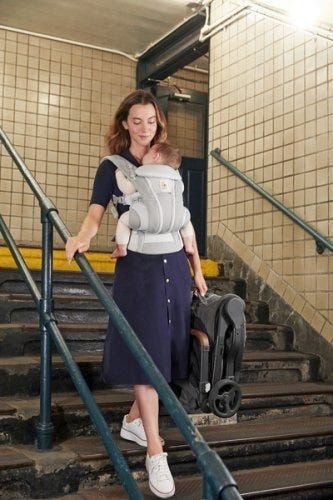

Summer adventures with your baby are a wonderful way to create lasting memories and enjoy the beauty of nature together. From baby carriers to strollers, Ergobaby products are designed to provide comfort and ease for both you and your little one. So, gear up, get outside, and explore the world with your baby by your side.
Ready to embark on your own summer adventures? Check out Ergobaby’s range of baby carriers and strollers to find the perfect match for your family’s needs. Visit our website today and start planning your next outdoor excursion!





